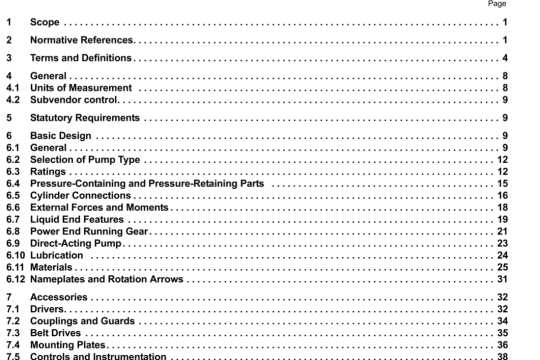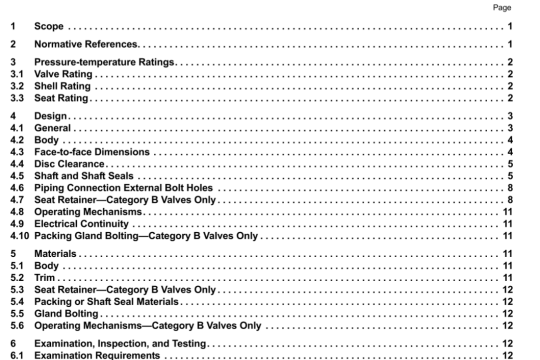API Publ 4701:2000 pdf download
API Publ 4701:2000 pdf download.BIOACCUMULATION:ANEVALUATION OF FEDERAL AND STATE REGULATORY INrTIATIVES.
Strategy; and the Binational Toxics Strategy. For each initiative, the initiative’s overall intent, the selection of bloaccumulative chemicals of concern, and the initiative’s implications for the petroleum industry are discussed. In Section 4.2, the use of bioaccumulation in state water quality programs is reviewed.
4.1 Federal Regulations
4.1.1 Fish Consumption Advisories
In total. USEPA (1997c) has identified 25 target chemicals or chemical groups, including PCBs. chiordane, dioxins, DDT (including DDE and DDD), mercury, selenium, and PAHs, as presenting a potential health risk due to bioaccumulation in fish (see Table 1). For most inorganic chemicals (except methylmercury), USEPA does not distinguish between the different species and only regulates based on the total chemical concentration.
Depending on their chemical structure, some chemicals will accumulate in fat tissue, while other chemicals tend to accumulate in muscle tissue. Lipophilic chemicals such as dioxins and PCBs tend to accumulate in the fatty tissues of fish. Other chemicals, such as mercury, tend to accumulate in the muscle tissue. Several studies have shown that chemicals in tat tissue can be reduced through trimming and cooking of fish (Zabik et al.. 1995, Zabik et al., 1996), while chemicals in muscle cannot.
In response to concerns about increased risk of carcinogenic and noncarcinogenic health effects from the consumption of contaminated fish, LJSEPA (1997c) developed risk-based consumption limits for the 25 chemicals in its target list. Consumption limits are based on the concentration in fish tissue, the meal size eaten, and the population of concern. USEPAs consumption limits generally apply to recreationallyand subsistence-caught freshwater, estuarine, and marine fish. Separate risk-based consumption limits are calculated for the general population, piegnant or nursing women, and children. Subsistence fishermen can also be of concern in certain areas.
The specific equations used by USEPA to calculate fish consumption advisories are presented in Appendix A. These equations may be modified to calculate overall daily consumption limits based on exposure to single chemicals in a multiple species diet or to use site-spedfic body weights or meal sizes (USEPA, 1997c). It is important to note that the equations do not use a BCF or BAF as part of the calculation of acceptable consumption levels. Bioaccumulation potential is only used as a means to identify chemicals of concern.
Using the equations in Appendix A. USEPA has calculated monthly consumption limits for the 25 chemicals identified in the target analyte list. For each chemical, USEPA provides an estimate of the acceptable number of meals assuming a 4 oz., 8 oz., 12 oz.. or 16 oz. meal size and a risk level of 1 x i04, 1 x 1O, or 1 x iO. For example, assuming an 8 oz. meal size, individuals in the population could be exposed to 1 mg/kg selenium in fish tissue without adverse noncancer health effects (assuming one fish meal per day). At 2 mg/kg, the recommended monthly fish consumption rate drops to 23 meals/month (USE PA, 1 997c).
As bioaccumulation becomes of greater concern to regulatory agencies, it is likely that the number of fish consumption advisories will continue to increase. Although USEPA is currently targeting an initial list o125 analytes, as other chemicals are identified as bioaccumulative (see Table 4-1), it is likely that fish consumption advisories will address additional chemicals in the future.
4.1.2 Great Lakes Water Quality Initiative
On March 23, 1995, USEPA finalized the Water Ouality Guidance for the Great Lakes System (60 FR 15365), known as the Great Lakes Water Quality Initiative (GLI). The GLI represents the results of over six years of work by individuals representing the Great Lakes States’ environmental agencies. USEPA National and Regional offices, US Fish and Wildlife Service, and the National Park Service. Amendments to the Clean Water Act in 1990 were made to ensure that the GLI was consistent with the Great Lakes Water Quality Agreement (GLWQA) signed between the United States and Canada. After final promulgation of the GLI. Illinois, Indiana, Michigan, Minnesota, New York, Ohio, Pennsylvania.




